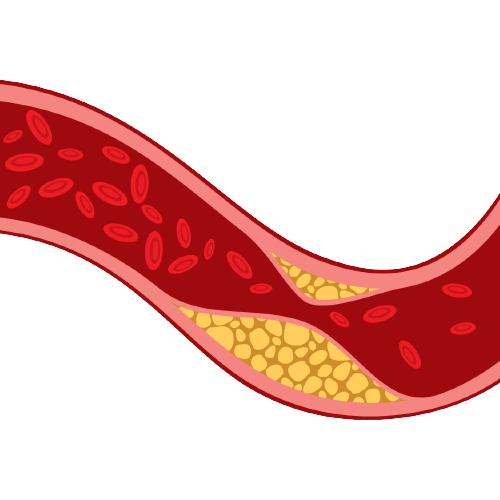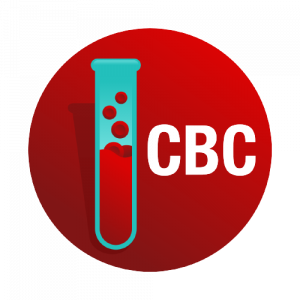Cholesterol & Lipid Blood Test
$79.00
A lipid blood test, also known as a lipid profile or lipid panel, is a blood test that measures the levels of various types of fats (lipids) in your blood. The results of a lipid panel help to assess your risk for cardiovascular diseases and to determine appropriate treatment or lifestyle modifications.
Maintaining healthy lipid levels through proper diet and exercise can help reduce the risk of heart disease and stroke.
Analytes in this test: 6 Total Analytes:- Total Cholesterol, HDL Cholesterol, HDL/Cholesterol, LDL Cholesterol, Triglycerides, VLDL Calculated.
Description
About the Test
The lipid panel is usually performed as part of a routine health screening, or to monitor people who are at risk of developing heart disease. The results of the lipid panel, along with other factors such as age, family history, and lifestyle, can help healthcare providers determine a person’s risk of developing heart disease and make recommendations for treatment or lifestyle changes.
Normal cholesterol levels vary, but total cholesterol levels should be less than 200 mg/dL, LDL cholesterol levels should be less than 130 mg/dL, HDL cholesterol levels should be 40 mg/dL or higher, and triglyceride levels should be less than 150 mg/dL.
Overview of Cholesterol Test or Lipid Panel
The lipid panel, also known as a cholesterol test or lipid profile, is a blood test that measures the levels of different types of fats (lipids) in the blood. These include:
- Total cholesterol: This is the overall amount of cholesterol in the blood.
- LDL cholesterol: This is the “bad” cholesterol that contributes to the build-up of plaque in the arteries, increasing the risk of heart disease.
- HDL cholesterol: This is the “good” cholesterol that helps remove plaque from the arteries and reduce the risk of heart disease.
- Triglycerides: These are a type of fat in the blood that can increase the risk of heart disease if levels are high.
The lipid panel is usually performed as part of a routine health screening, or to monitor people who are at risk of developing heart disease. The results of the lipid panel, along with other factors such as age, family history, and lifestyle, can help healthcare providers determine a person’s risk of developing heart disease and make recommendations for treatment or lifestyle changes.
Normal cholesterol levels vary, but total cholesterol levels should be less than 200 mg/dL, LDL cholesterol levels should be less than 130 mg/dL, HDL cholesterol levels should be 40 mg/dL or higher, and triglyceride levels should be less than 150 mg/dL.
Analytes Tested in Lipid Panel
5 Analytes
- Total Cholesterol
- LDL Cholesterol
- HDL Cholesterol
- VLDL
- Triglycerides
Total Cholesterol
Total cholesterol is a measure of the overall amount of cholesterol in the blood. Cholesterol is a type of fat that is produced by the liver and also obtained from food.
High levels of total cholesterol can increase the risk of heart disease and stroke by contributing to the buildup of plaque in the arteries. The American Heart Association recommends that people have their cholesterol levels checked regularly, as part of a routine health screening.
A total cholesterol test is typically performed as part of a lipid panel, which measures the levels of different types of fats (lipids) in the blood, including total cholesterol, low-density lipoprotein (LDL) cholesterol, high-density lipoprotein (HDL) cholesterol, and triglycerides.
Normal total cholesterol levels are considered to be less than 200 mg/dL. However, the target level of total cholesterol depends on a person’s individual risk factors, such as age, family history, and lifestyle. A healthcare provider can interpret the results of a total cholesterol test and make recommendations for treatment or lifestyle changes as needed.
HDL Cholesterol
High-density lipoprotein (HDL) cholesterol is sometimes referred to as the “good” cholesterol because high levels are associated with a reduced risk of heart disease and stroke. HDL cholesterol helps remove plaque from the arteries and reduce the risk of heart disease.
The HDL cholesterol test measures the amount of HDL cholesterol in the blood. It is typically performed as part of a lipid panel, which measures the levels of different types of fats (lipids) in the blood, including total cholesterol, low-density lipoprotein (LDL) cholesterol, HDL cholesterol, and triglycerides.
The American Heart Association recommends that people have their cholesterol levels checked regularly, as part of a routine health screening. Normal HDL cholesterol levels are considered to be 40 mg/dL or higher. Higher levels of HDL cholesterol are associated with a lower risk of heart disease, while lower levels are associated with an increased risk.
A healthcare provider can interpret the results of an HDL cholesterol test and make recommendations for treatment or lifestyle changes as needed. This may include changes to diet and exercise, as well as medication to raise HDL cholesterol levels.
LDL Cholesterol
Low-density lipoprotein (LDL) cholesterol is sometimes referred to as the “bad” cholesterol because high levels can increase the risk of heart disease and stroke. LDL cholesterol contributes to the buildup of plaque in the arteries, which can narrow or block blood flow.
The LDL cholesterol test measures the amount of LDL cholesterol in the blood. It is typically performed as part of a lipid panel, which measures the levels of different types of fats (lipids) in the blood, including total cholesterol, LDL cholesterol, high-density lipoprotein (HDL) cholesterol, and triglycerides.
The American Heart Association recommends that people have their cholesterol levels checked regularly, as part of a routine health screening. Normal LDL cholesterol levels are considered to be less than 130 mg/dL. However, the target level of LDL cholesterol depends on a person’s individual risk factors, such as age, family history, and lifestyle.
A healthcare provider can interpret the results of an LDL cholesterol test and make recommendations for treatment or lifestyle changes as needed. This may include changes to diet and exercise, as well as medication to lower cholesterol levels.
Triglycerides
Triglycerides are a type of fat that is found in the blood and stored in the body’s fat cells. Triglycerides are the main form of fat in the diet and are also produced by the liver.
The triglycerides blood test measures the amount of triglycerides in the blood. It is typically performed as part of a lipid panel, which measures the levels of different types of fats (lipids) in the blood, including total cholesterol, low-density lipoprotein (LDL) cholesterol, high-density lipoprotein (HDL) cholesterol, and triglycerides.
High levels of triglycerides in the blood can increase the risk of heart disease and stroke. Triglycerides contribute to the buildup of plaque in the arteries, which can narrow or block blood flow.
The American Heart Association recommends that people have their cholesterol levels checked regularly, as part of a routine health screening. Normal triglyceride levels are considered to be less than 150 mg/dL. However, the target level of triglycerides depends on a person’s individual risk factors, such as age, family history, and lifestyle.
A healthcare provider can interpret the results of a triglycerides test and make recommendations for treatment or lifestyle changes as needed. This may include changes to diet, exercise, and medication to lower triglyceride levels.
VLDL
Very low-density lipoprotein (VLDL) is a type of lipid, or fat, found in the blood. VLDL is produced by the liver and is a source of triglycerides, which are a form of fat that is stored in the body’s fat cells.
VLDL is one of the components of a lipid panel, which measures the levels of different types of fats (lipids) in the blood, including total cholesterol, low-density lipoprotein (LDL) cholesterol, high-density lipoprotein (HDL) cholesterol, and triglycerides. The VLDL test measures the amount of VLDL in the blood.
High levels of VLDL in the blood can increase the risk of heart disease and stroke. VLDL contributes to the buildup of plaque in the arteries, which can narrow or block blood flow.
The American Heart Association recommends that people have their cholesterol levels checked regularly, as part of a routine health screening. Normal VLDL levels vary, but are typically considered to be less than 30 mg/dL. However, the target level of VLDL depends on a person’s individual risk factors, such as age, family history, and lifestyle.
A healthcare provider can interpret the results of a VLDL test and make recommendations for treatment or lifestyle changes as needed. This may include changes to diet, exercise, and medication to lower VLDL levels.
Specimen Requirements
SST tube of blood, serum
Turn Around Time
5 to 24 hours
Price For Test
Price: $59
Price For Test
Price: $79







